We normally think of paper as something frail and flimsy. However, architects all over the globe have been experimenting with it, to prove its versatility as an environmentally friendly material. Paper is readily available, consistently low-cost, recyclable and biodegradable. Besides, paper can also be surprisingly strong to be utilized as a construction material, proving that the strength of the building has nothing to do with the strength of the material it was built from.
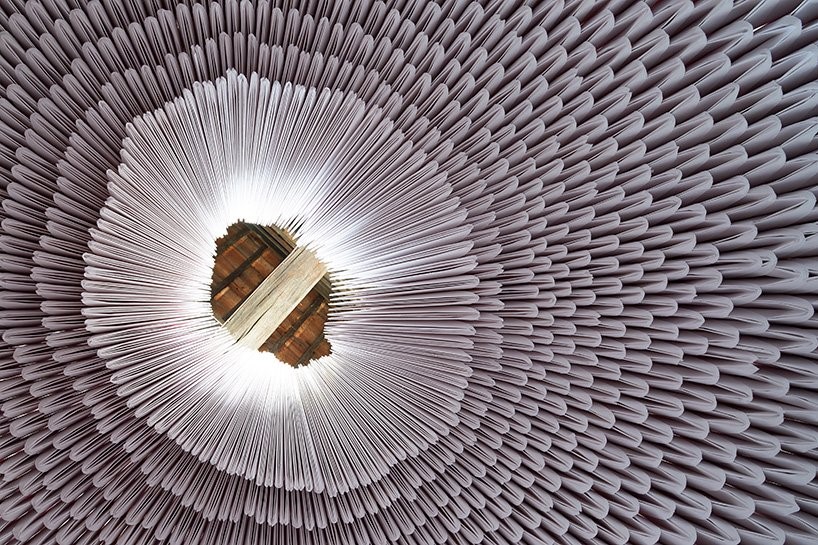
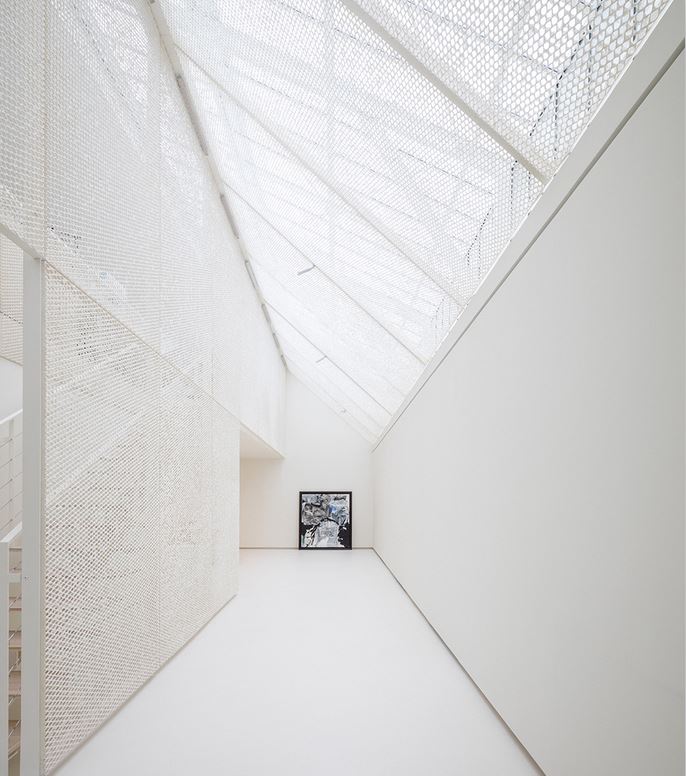

The Clave Archive by Kengo Kuma
Kengo Kuma and associates has spread washi paper over sheets of expanded aluminum mesh to build the Clave Archive, a private museum housing the works of Antoni Clave, an artist representing 20th century Spanish art. The sheets have been used as screens throughout the interior of the building, encasing the museum’s central stairwell and the lining of the skylight, generating a new kind of texture with a sense of solidity and transparency, as well as a subtle interplay of light and shadow.

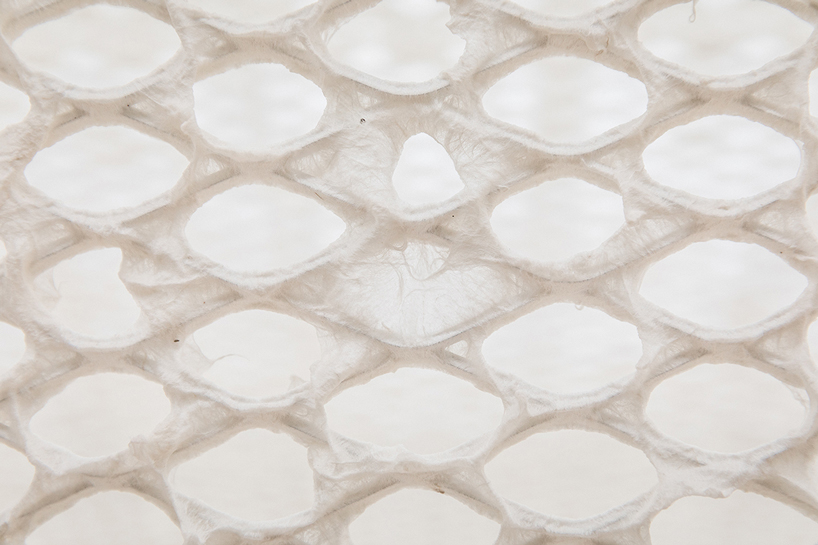
The Clave Archive by Kengo Kuma
Washi paper is known for its textural quality and strength. The screens for the project were prepared in western France by Yasuo Kobayashi, a washi manufacturer. During the process of washi making, the mesh sheet is soaked in a starchy liquid made from kozo (mulberry) and sunset hibiscus. Pulpous form of the paper is blasted over the wire mesh. Various levels of transparency are achieved by controlling and adjusting thickness of the solution and the way washi is dried.
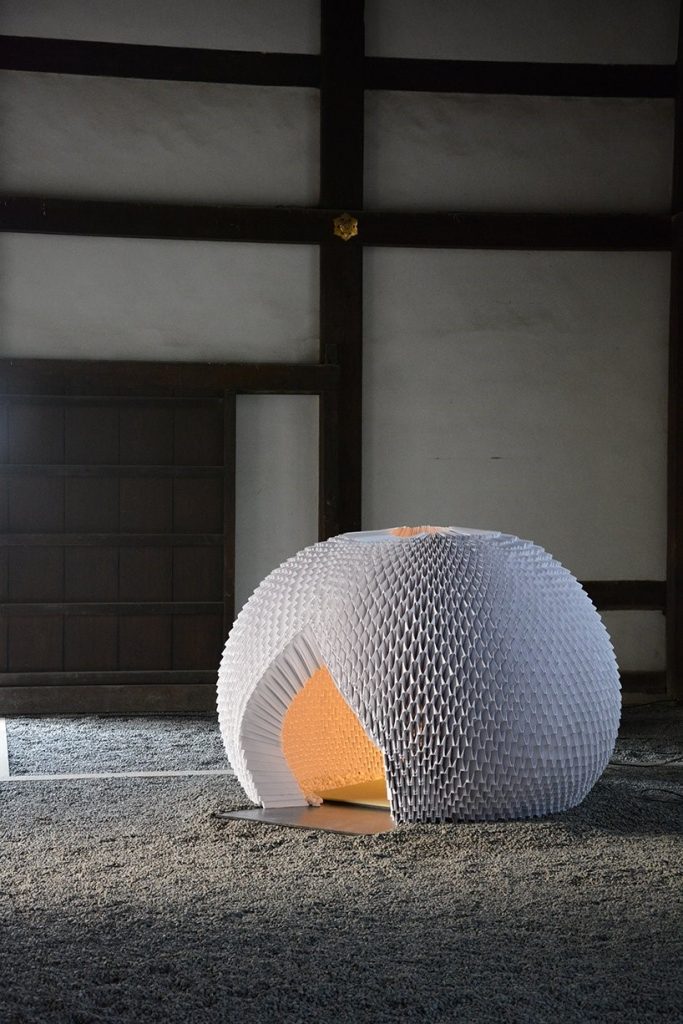
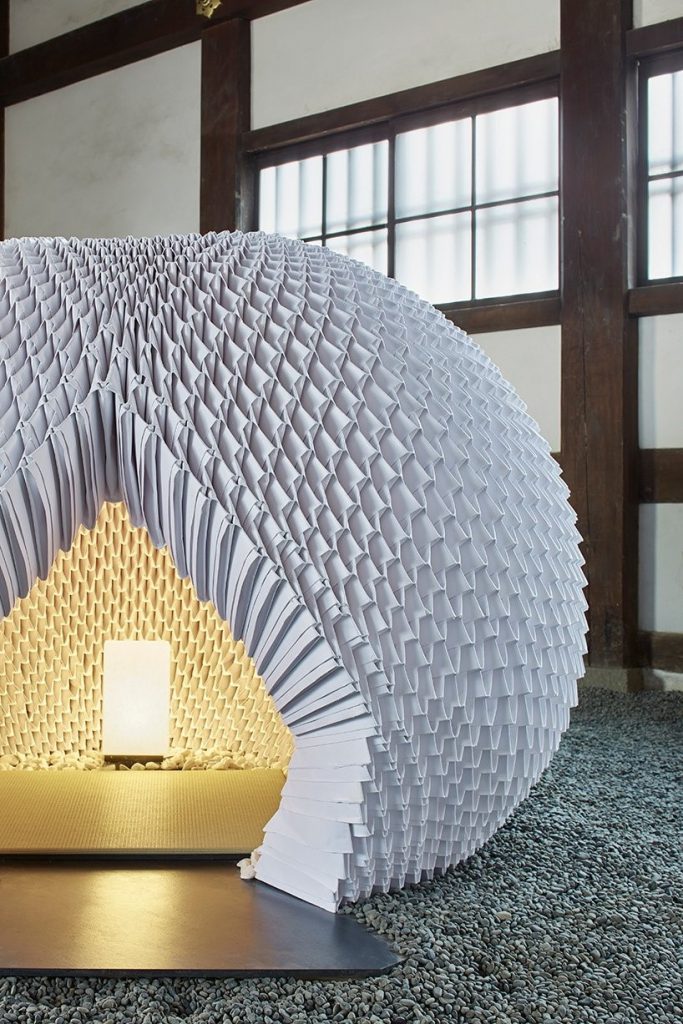
Paper tea house by Katagiri Architecture + Design and Akinori Inuzuka Design (ph: Takuya Watanabe; also header image)
Washi paper was used as the only structural element in the “Shi-an”, a temporary tea house created by Katagiri Architecture + Design in collaboration with Akinori Inuzuka Design. An origami technique was developed to ensure structural stability and allow for easy assembly in a modular manner without fixed foundations.
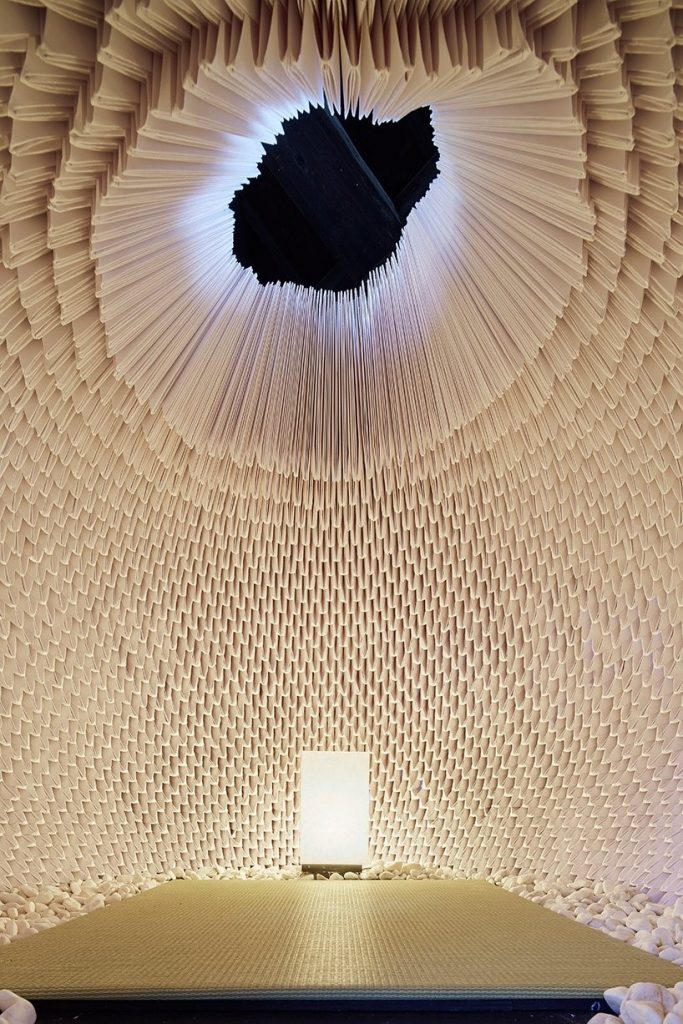
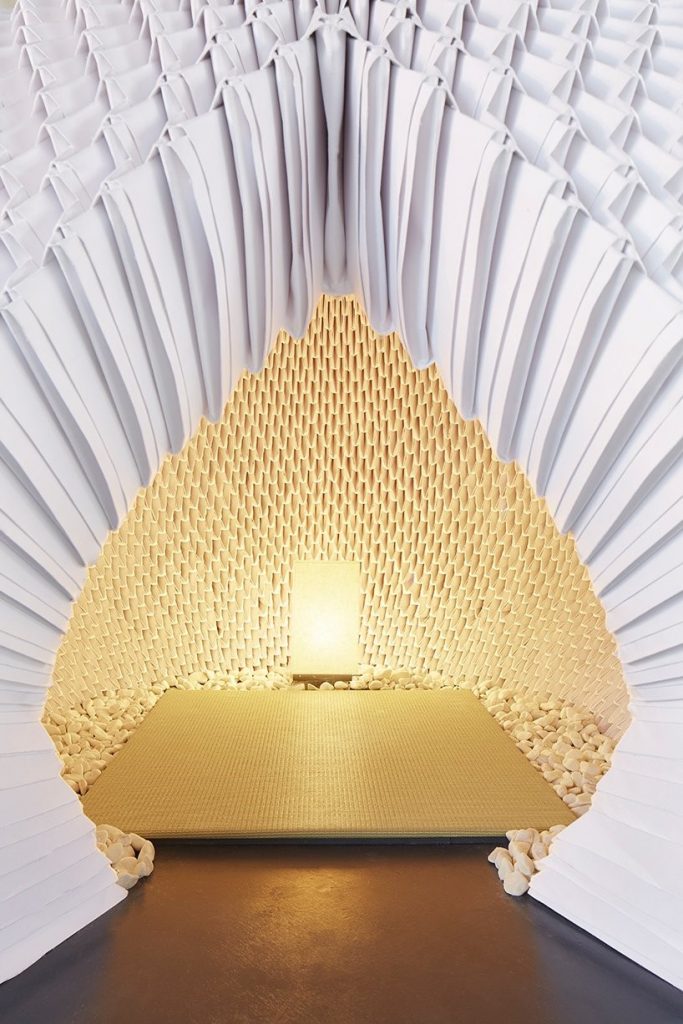
Paper tea house by Katagiri Architecture + Design and Akinori Inuzuka Design (ph: Takuya Watanabe)
Pieces of paper were folded eight times to form a single unit with two ‘pockets’ and two ‘arms’, so the units could simply be slotted together without glue. In addition, the origami structure can be built in different ways to accommodate a variety of activities.


Paper tea house by Katagiri Architecture + Design and Akinori Inuzuka Design (ph: Takuya Watanabe)
The design team says that the tea house is inspired by the beauty of transience, which represents Japan’s sense of values towards space and the environment.

Cardboard cafe by Nudes (ph: Mrigank Sharma)
Nudes, an architecture studio founded in Mumbai by Nuru Karim, has built an entire cafe in Mumbai using cardboard, with walls, chairs, tables and even lampshades all sculpted from pieces of the corrugated material.

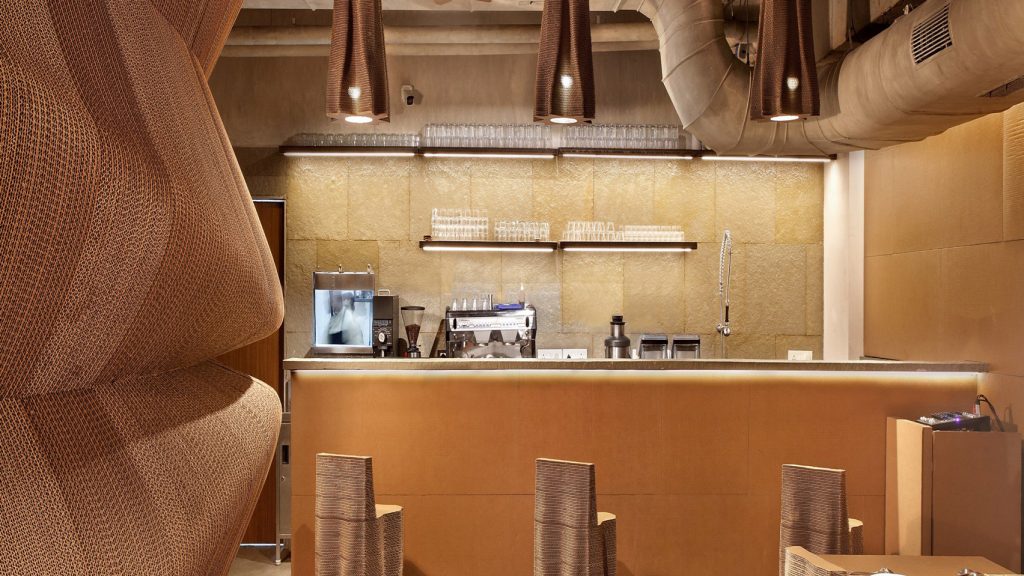
Cardboard cafe by Nudes (ph: Mrigank Sharma)
To produce the desired curvaceous shapes of the furnishings, the team used multiple precision-cut layers of cardboard. Pieces such as tables and children’s highchairs were assembled from cardboard elements, treated with wax to prevent water absorption and provide easy cleaning.
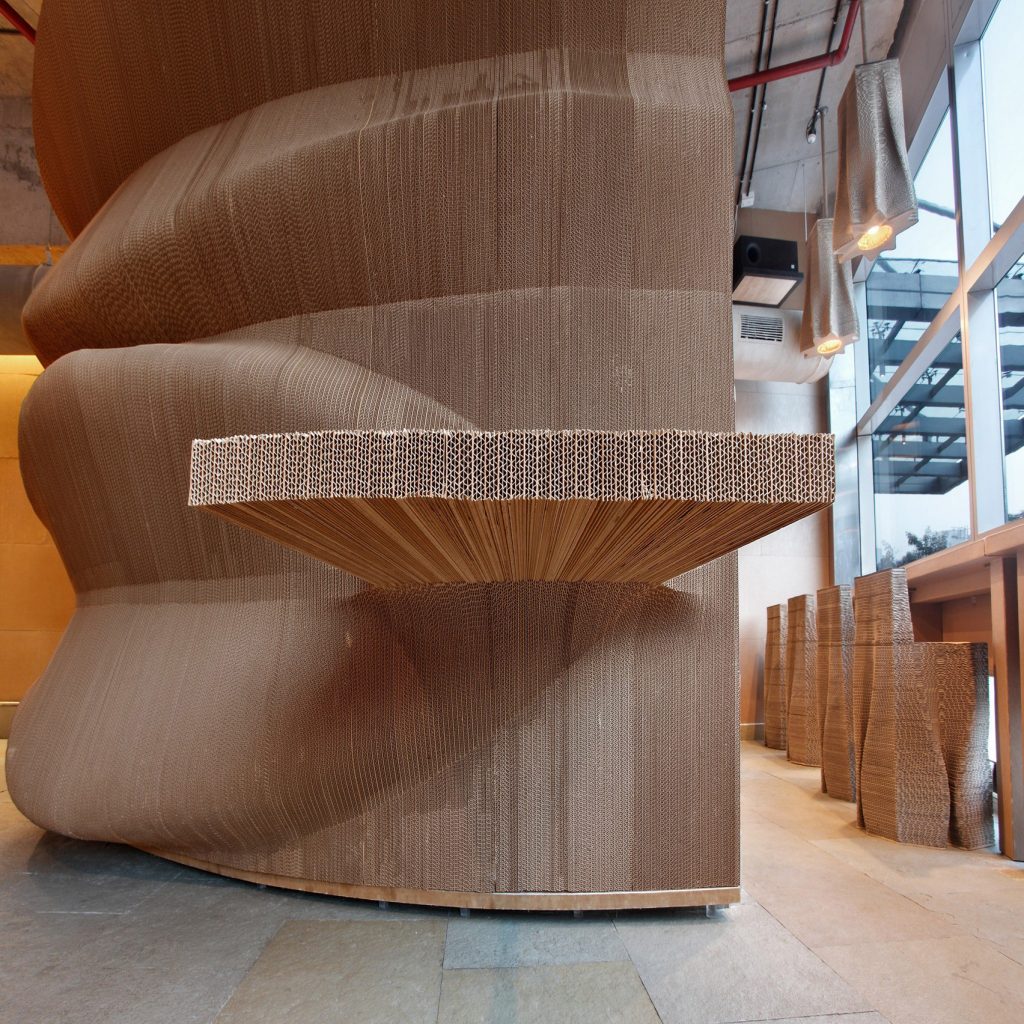
Cardboard cafe by Nudes (ph: Mrigank Sharma)
In addition to its recyclable and biodegradable properties, cardboard is also an insulating material that absorbs sound well in the noisy cafe in environment.
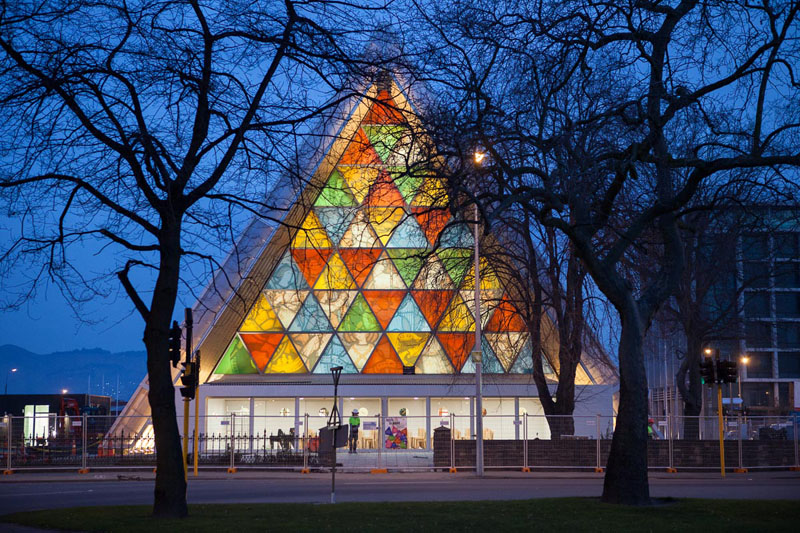
Christchurch Cathedral by Shigeru Ban (ph: Bridgit Anderson)
The architect best known for working with paper tubes as building material is Shigeru Ban. Back in 2013, is architecture studio with the head office in Tokyo was asked to design a temporary sacred space in New Zealand after the original cathedral, symbol of the city, had been irreparably damaged by an earthquake.
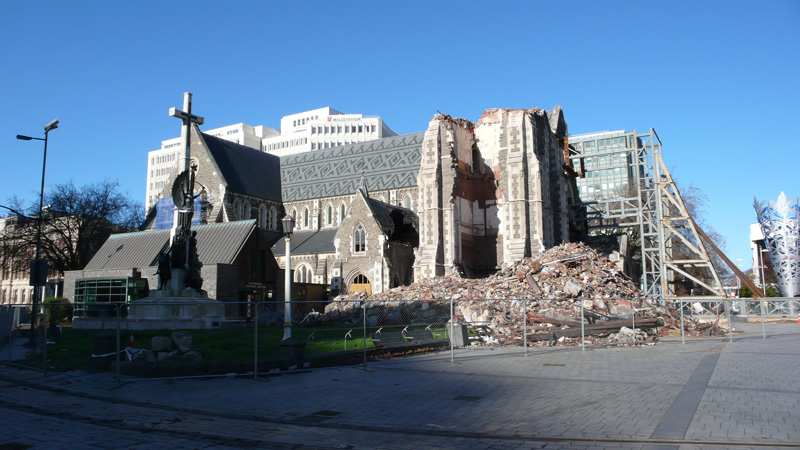
The project comprises a triangular structure formed by paper tubes of the equal length and 20 ft containers. Since geometry is decided by plan and elevations of the original cathedral, there is a gradual change in each angle of paper tubes. The cathedral, which has the capacity to accomodate 700 people, can also function as an event and concert venue.

Christchurch Cathedral by Shigeru Ban (ph: Bridgit Anderson)
When the project was announced, many were concerned that the structure would ‘go soggy in the rain’. The solution is a polycarbonate roof above protecting the paper tubes and very solid concrete floor below, while sturdy LVL (laminated veneer lumber) inserted beams, lend further substantial support to these tubes.
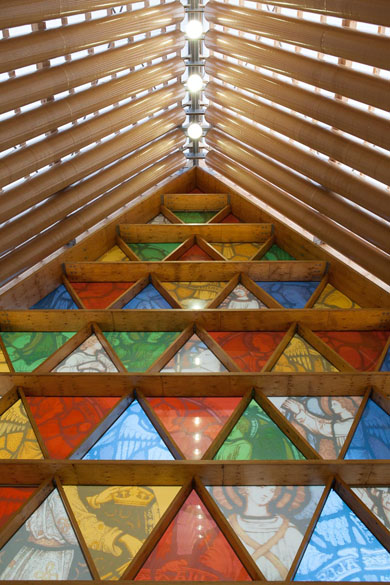
Christchurch Cathedral by Shigeru Ban (ph: Bridgit Anderson)
Surprisingly, the cardboard cathedral is one of the safest buildings in the city, for it is built to last 50 plus years and to 100% of the earthquake code.